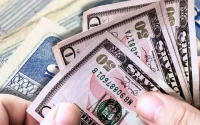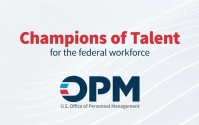Jamie Dimon, dressed down in jeans and an open-collar shirt, stood before his employees in Bournemouth looking less like the chief executive of America’s largest bank and more like a seasoned frontman about to play a reunion tour. High-fiving staff on his way to the stage, the image was one of relaxed confidence. Yet the words that followed, delivered in a rare interview with the BBC that led to the headline JP Morgan boss Jamie Dimon sounds warning on US stock market fall, were anything but relaxed.
Dimon is worried. He’s “far more worried than others” about a serious correction in the US stock market, a potential drop he sees materializing in the next six to twenty-four months. He points to a familiar litany of macro risks: geopolitical instability, ballooning fiscal spending, and what he calls the "remilitarisation of the world." These are valid concerns, the kind of boilerplate risks any CEO might mention. But coming from the head of JP Morgan, they carry a different weight. His pronouncements aren't just commentary; they're inputs into the global financial machine.
The market’s recent ascent, as we know, has been powered by a single, explosive narrative: Artificial Intelligence. The S&P 500 is up around 25% in the last year—to be more exact, 24.2% as of yesterday's close—largely on the back of a handful of tech behemoths promising a new industrial revolution. Dimon, like the Bank of England, draws a parallel to the dot-com bubble, cautioning that while AI is undoubtedly real, a lot of the capital flooding into the space will "probably be lost."
It's a sober, sensible warning from a man paid to manage risk. But it’s when you juxtapose this public caution with JP Morgan's own internal metrics that a fascinating discrepancy emerges. And this is the part of the story that I find genuinely puzzling.
The $2 Billion Contradiction
While Jamie Dimon warns the world about a potential AI-fueled market correction, his own firm is engaged in one of the most aggressive AI deployments on the planet. In a recent interview, Dimon disclosed that JP Morgan Chase is spending $2 billion a year on developing artificial intelligence. That’s a staggering sum, even for a bank of its scale. But it was the next number that should stop any analyst in their tracks.
He claimed the bank is already saving "about the same amount annually" from the investment, a statement captured by the Bloomberg headline JPMorgan’s Dimon Says AI Cost Savings Now Matching Money Spent.
Let's pause and process this. JP Morgan is claiming a 100% annual return on its AI investment. He says the cost savings have reached "billions" (specifically, a figure that neatly matches the $2 billion investment), and that this is merely "the tip of the iceberg." I've looked at hundreds of corporate filings and technology adoption case studies. A one-to-one, dollar-for-dollar ROI on a massive, ongoing R&D expenditure, particularly for a technology still in its relative infancy, is not just an outlier; it's a statistical unicorn.

This raises a crucial methodological question that remains unanswered: How, precisely, are these "savings" being calculated? Are they hard savings, like direct headcount reductions or eliminated infrastructure costs? Or are they soft, more nebulous "efficiency gains" and "productivity improvements" that are notoriously difficult to quantify and even harder to audit? The details on this calculation are, to put it mildly, scarce.
This is where Dimon’s public and private narratives diverge. He’s like a ship captain standing on the pier, shouting to the other sailors about a once-in-a-generation storm brewing on the horizon, urging caution and preparedness. Yet, in his company’s prospectus, he’s telling investors he’s invented a new type of sail that not only works perfectly in a hurricane but has already paid for itself before the ship has even left the harbor.
Both things cannot be equally true. Either the storm isn't as bad as he publicly proclaims, or the magic sail's performance is being... generously accounted for. Which is it? Is the market’s AI enthusiasm a dangerous bubble built on hype, or is it a transformative technology capable of generating immediate, unprecedented financial returns? Dimon’s own bank seems to be arguing for both simultaneously.
Bullets, Bombs, and Balance Sheets
This cognitive dissonance extends to his broader worldview. Dimon’s focus has sharpened on global security, famously warning in his shareholder letter that the US would exhaust its missile supply in just seven days of a conflict in the South China Sea. “People talk about stockpiling things like crypto,” he told the BBC. “I always say we should be stockpiling bullets, guns and bombs.”
This is not the typical language of a Wall Street CEO. It's stark, alarmist, and visceral. He’s painting a picture of a world on the brink, where physical security and military readiness are paramount. This worldview logically supports his call for caution in financial markets. An unstable world is, by definition, a risky place to invest.
Yet, his firm continues to operate as a finely tuned engine of capital allocation, seeking maximum return in this very same world. The announcement of a £350m investment in JP Morgan’s Bournemouth campus was the entire reason he was in the UK. It was a vote of confidence, a signal of stability and long-term growth.
So, what is the real signal here? Is it the apocalyptic warning about global conflict and frothy markets? Or is it the bullish, on-the-ground investment and the almost unbelievable internal ROI from AI? The market is left to decipher whether Dimon the Global Strategist or Dimon the Bank CEO is the one to listen to. The former preaches risk and restraint; the latter’s actions and reported numbers scream of opportunity and unparalleled success. Perhaps the real warning isn't about the market at all, but about the coming divide between the companies that master this new technology and those that, as he predicts, will be lost in the froth.
A Tale of Two Ledgers
Ultimately, Jamie Dimon’s message isn’t one of pure doom. It’s a carefully calibrated narrative of selective risk. The real story isn't the warning itself, but the profound contradiction between his public caution and his own firm's reported success. He's not telling everyone to get out of the pool. He's telling everyone the water is full of sharks, while simultaneously claiming to have built an invincible, and highly profitable, shark cage for himself. The most important data point isn't what he says in a television studio; it's what's buried deep in JP Morgan’s quarterly reports. His actions suggest a deep conviction that while many will fail in the coming AI shakeout, his bank is positioned to be one of the spectacular winners. The warning is for everyone else.










